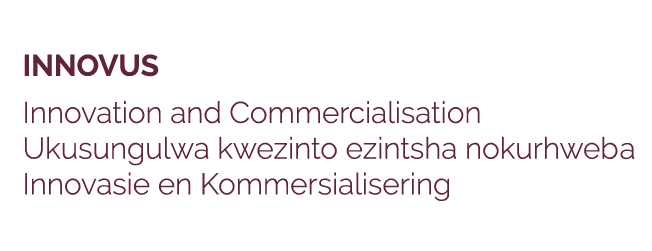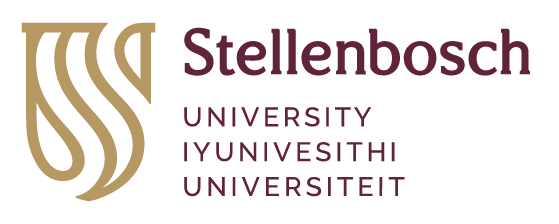As the fourth and final quarter of 2009 draws to a close, InnovUS has exceeded even its own expectations. In the last three months alone, InnovUS received 14 new disclosures bringing the total number for 2009 to 62. This surpasses the target of 39 for the year and is a significant increase from the previous record of 43 in 2007.
The good news does not stop here, however. Anita Nel, Chief Executive Officer, says that InnovUS also enjoyed a high volume of licensing agreements and entrepreneurial activity leading to the formation of yet another spin-out company this year.
“In terms of spin-out company formation, we are pleased to announce that the shareholder agreement for NioCad (Pty) Ltd was concluded and signed in November 2009 with InnovUS. The inventors and the investors (IDC Venture Capital and the Innovation Fund) now have an equity share in the company,” says Anita. “Our portfolio of spin-out companies now employs a total of 203 employees.”
The Short Courses division also enjoyed a record year. Approximately 5 420 students attended the 356 courses registered in 2009 to date. “There are vast improvements in the pipeline for this division in 2010,” says Anita. “Among others, we will be recruiting a Short Courses manager in the first quarter of 2010.” Click here to read more about plans for this division.
InnovUS, on the whole, will also reap the benefits of a number of new developments and challenges in 2010. “We look forward to accepting the revised Intellectual Property (IP) Commercialisation Policy for the University, finding new funding for our two upcoming spin-out companies and streamlining our processes to increase efficiency,” concludes Anita.
To celebrate our tenth successful year as the technology transfer company of Stellenbosch University, InnovUS recently hosted a birthday bash – or three! The auspicious occasion? Not only did InnovUS celebrate a decade in existence, but a sensational year of innovation, commercialisation and year-on-year growth.
Anita Nel, Chief Executive Officer, says the year in review was characterised by increased entrepreneurial activity and financial and overall company growth worthy of recognition.
“The success enabled InnovUS to move premises to 15 De Beer Street, Stellenbosch, and increase its marketing initiatives with a brand-new website and the launch of our e-Newsletter. Furthermore, InnovUS restructured into a wholly-owned subsidiary of the University – a highlight without a doubt,” she says.
InnovUS thanks all the researchers, management, clients and suppliers for their support throughout the year and for joining us on 28 October, 4 December and 7 December respectively to help us blow out our candles! We look forward to a productive year ahead in 2010.
A special thank you is reserved for the people who had the vision to start InnovUS ten years ago, yet again placing Stellenbosch University on the map as a leader among universities in South Africa. Their contribution throughout the years has provided InnovUS with a solid foundation.
In an aptly innovative move, InnovUS is pleased to announce that we’re officially showing our environmentally friendly colours and going green! With help from the University’s Centre for Renewable and Sustainable Energy Studies and Setsolar, InnovUS will soon be installing energy-saving solar panelling at its premises.
According to Prof. Wikus van Niekerk, Director: Centre for Renewable and Sustainable Energy Studies, the installation of the solar panels has both short- and long-term benefits for InnovUS as well as the University.
Prof van Niekerk claims that “free” electricity generated by the panels is the obvious and immediate benefit. “Photovoltaic (PV) panels convert sunlight into electricity. Some of it will be stored in batteries while the rest gets used by the building,” he explains. “In the evenings, energy stored in the batteries will be available for usage through an inverter,” he continues.
More important, however, are the long-term effects – reduced dependence on conventional power sources and a “greener” image for the University.
InnovUS thanks Setsolar for the donation of the panels, and the Centre for Renewable and Sustainable Energy Studies for facilitating the donation.
One of the researchers at InnovUS, Dr Coenrad Fourie, has taken his research on superconductors to new heights. In May this year we reported on the success of his jointly owned business, NioCAD – an InnovUS spin-out company. Six months later, he’s the head researcher for Scryer, also an SU start-up located within the InnovUS stable. Scryer has developed novel screening technology that could vastly improve airport security – a R10 billion market there for the taking.
According to a recent article in Brainstorm Magazine, the advanced screening technology will enable airport security to safely detect hidden objects on people as they pass through screening points.
Dr Fourie says that the imagers work in a similar way to digital cameras, except that the sensor plane – like ‘digital film’ – is constructed with super-conductive devices cooled to cryogenic temperatures. Instead of detecting visible light, Scryer imagers are designed to detect invisible light beyond infrared.
“All objects emit some form of light, and human bodies are no exception,” explains Dr Fourie. “Humans appear much warmer than typical dangerous objects. Metals, ceramics and hard plastics absorb the radiation we emit, and when photographed with the imager, such objects show up as clear dark spots against the human body.”
Unlike X-ray scanners, the imagers do not emit any radiation of their own in order to construct the images, and are thus completely safe.
After Dr Fourie and his team had been involved in superconductor electronics for more than a decade, they hatched the plan for the imager in 2007 when they responded to a call from the Department of Science and Technology Innovation Fund’s National Innovation Competition.
Speaking highly of InnovUS, Fourie says that the company has been instrumental in Scryer’s development. “It organises access to experienced entrepreneurs when we do business planning, to patent attorneys when we search for competitors and need idea protection, and to venture capitalists or seed funding when we reach the stage where everybody believes in the commercial future,” he says.
“We just need to ‘make it happen’,” he insists.
Dr Fourie says that although it will be challenging, Scryer has the potential to infiltrate the global market, but not before succeeding locally with Airports Company South Africa (ACSA).
InnovUS wishes Dr Fourie’s team all the best for Scryer’s success and will start the year by introducing the technology to possible investors.
InnovUS recently awarded not one, but five, licence agreements to Genediagnostics (Pty) Ltd, a BEE start-up company registered to Dr Monique Zaahl, senior lecturer at the Department of Genetics (Faculty of AgriSciences). These five, as well as other agreements, have contributed significantly to InnovUS exceeding its overall targets for 2009.
The licence agreements awarded to Genediagnostics for cutting-edge inventions for the diagnosis of hereditary haemochromatosis, as well as for oesophageal cancer, are as follows:
Hereditary haemochromatosis is a common condition resulting from an iron overload. The common genetic mutations responsible for the condition in Caucasians are, however, not associated with Asian Indians. Dr Zaahl’s innovation identifies a genetic aberration responsible for iron overload in a South African Indian family.
The invention for the diagnosis of oesophageal cancer presents a genetic identifier that can aid in the risk assessment and diagnosis of the disease as well as drug therapy development.
In the past year alone, InnovUS has facilitated a total of seven licensing agreements and thus met its target for 2009. It is in the final stages of negotiating the last two licences – for new wine yeast (developed with funding from Winetech), and for rooibos tea extract that serves as a food preservative (developed in co-operation with the Agricultural Research Council).
AFRICAN SUN MeDIA opens a new store on campus
Click here to read more.
Soccer fans are not the only ones with something to look forward to in 2010. Students and staff can anticipate major process enhancements to Stellenbosch University’s Short Courses Division in the new year. In particular, the division – which forms part of InnovUS– is preparing to streamline its processes by migrating even further to the University’s online environment.
Preliminary preparations have already taken place, with utmost care being taken to adhere to the Policy in respect of the presentation of short courses at Stellenbosch University. This is what’s on the cards:
Need more information? Click here to visit the Short Courses Division’s website. Alternatively, contact Ms Carol Kat on 021 808 2992 or e-mail carolk@sun.ac.za.
Innovus, Stellenbosch University
|
15 De Beer Street
Stellenbosch
7600
South Africa
|
PO Box 3135
Matieland
7602
South Africa
|
|
t +27 (0) 21 808 3826
e info@innovus.co.za
e forms@sun.ac.za |

